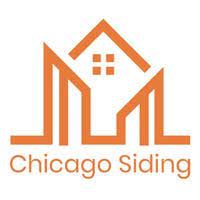When it comes to home improvement projects, installing new siding can enhance the appearance, functionality, and value of your home. However, before diving into the project, it's crucial to understand the Siding Installation Costs involved. This comprehensive guide aims to provide homeowners with an overview of siding installation costs, factors that influence pricing, and tips for budgeting effectively.
1. Types of Siding:
- Vinyl Siding: Vinyl is a popular and affordable option known for its low maintenance and durability. It typically ranges from $2 to $7 per square foot.
- Fiber Cement Siding: This type of siding is resistant to rot, fire, and pests. Fiber cement siding usually costs between $5 and $10 per square foot.
- Wood Siding: Wood offers a classic and natural aesthetic, but it requires more maintenance. Wood siding can range from $6 to $12 per square foot.
- Metal Siding: Aluminum and steel siding options are available, with prices ranging from $5 to $12 per square foot.
- Composite Siding: Combining different materials, composite siding offers durability and versatility. Prices typically range from $7 to $15 per square foot.
2. Factors Affecting Siding Installation Costs:
- Siding Material: Each type of siding has a different cost per square foot, as mentioned above.
- Siding Area: The total square footage of your home's exterior will impact the overall cost.
- Siding Style: Intricate designs or customized patterns may require additional labor and increase costs.
- Preparation Work: If existing siding needs removal or repairs, it will add to the overall project cost.
- Insulation: Adding insulation beneath the siding can improve energy efficiency, but it will increase the installation cost.
- Labor Costs: Labor fees can vary depending on the region, complexity of the project, and contractor's expertise.
3. Additional Expenses:
- Permits: Check if your local municipality requires permits for siding installation and consider the associated costs.
- Trim and Accessories: Costs may include corner pieces, soffits, fascia boards, and window/door trims.
- Removal and Disposal: If the old siding needs to be removed and disposed of, there may be additional fees.
4. Budgeting Tips:
- Obtain Multiple Quotes: Get estimates from different contractors to compare prices and services.
- Consider Long-Term Costs: While upfront costs are important, factor in maintenance, durability, and energy efficiency to evaluate the long-term value of different siding materials.
- Plan for Contingencies: Allocate a portion of your budget for unexpected expenses or potential repairs.
- Financing Options: Explore financing options if the siding installation cost exceeds your budget.
Understanding the factors that influence siding installation costs is essential for homeowners planning to undertake such a project. By considering siding materials, project scope, labor expenses, and additional costs, homeowners can budget effectively and make informed decisions. Remember to evaluate the long-term benefits and maintenance requirements when selecting a siding material. With careful planning and thorough research, you can successfully enhance your home's appearance and value through siding installation.


No comments yet